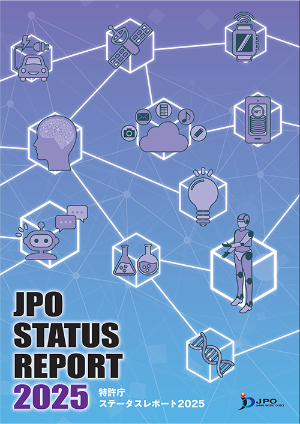Introduction to the Japan Patent Office (JPO) Status Report 2025
July 2, 2025
Article Summary:
This article presents a focused overview of selected data from the "JPO Status Report 2025", highlighting the latest trends and year-on-year comparisons, particularly as regards numbers of intellectual property applications. The JPO Status Report is a document published annually by the Japan Patent Office. It comprehensively outlines "Facts and Figures on Trends in Intellectual Property" and "Policy Outcomes". This report is made available in both Japanese and English, serving as a valuable resource for those interested in the intellectual property landscape. As this article provides only a partial overview, we encourage interested parties to read the full report for more detailed and comprehensive information.

•FA Pendency and Total Pendency for Patent Examinations in FY2023: The average first action (FA) pendency period improved from 10.0 months in FY2022 (based on the Japan Patent Office Status Report 2024) to 9.4 months in FY2023, a reduction of approximately 0.6 months. The overall total pendency for patent examinations also decreased from an average of 14.7 months in FY2022 (based on the Japan Patent Office Status Report 2024) to 13.8 months in FY2023, an improvement of approximately 0.9 months. These reductions suggest greater processing efficiency within the patent examination system.
Read the full report here: JPO Status Report 2025 | Japan Patent Office
This article was provided by the International Information Group
Please use the contact form below for inquiries or comments.






















